Gypsies in Photobooks
Recently overheard in the ICP library: A discussion on how “they” were on the subway. Imagine that! Actual Gypsies had made it across the ocean and were now begging here. Here! In our liberal city! Which made me think that y’know some of them might have actually been in the library. Apparently, some of “them” can read and they certainly do appreciate looking at photographs. It made me wonder about how they are so negatively perceived even by the most liberal New Yorkers, who would abhor being thought of as racists. It seems most Americans tend to equate the “Gypsy” as something akin to a Goblin or an Orc – foreign, mysterious, elusive, evil and unreal. In reality “they” have been in the “land of the free” (speaking of the mythological) for quite some time.
The Roma – Romanies, the gypsies, the exotic outlaws and the pariahs of respectable society – photographers just don’t seem able to leave them alone. Photographers can’t get enough of them. The gypsy is picturesque. The intruder photographer is spellbound. Gypsies seem to have all the potential elements for creating a great image. They come with their very own built-in formal image elements and with a compelling tragic narrative.
Gypsies – they draw you in with their forlorn eyes and once captured, the photographer obsessively tries to understand the magic: Their soul. The twinkle in their eyes. That undercurrent of passion. Wizened faces. Sometimes a costume. Scarves and jewellery. Often a hat. Tattoos. Women breast-feeding. Children with dirt on their faces. A horse. Mobile architecture. Colourful fabrics. Musical instruments. A dog. Gesture, posture, behavior, dress, hairstyle and ornamental accessories. A performance. Beautiful and . . .(also heard in the ICP library on a separate occasion) depraved. Degenerate.
These photogenic people, throughout history, are the great pariahs, symbolizing both the freedom of the open road, but also symbolizing all the fears of a well-maintained and normal society. They undermine the values of a normal society with their crazy music, fortune telling and dark magic (albeit that some “normal societies” these days are seriously considering electing a president who wears magic underwear).
Gypsies as portrayed in photobooks appeal to both the Romantic and the Documentary photographer – it is almost as if you can tell multiple narratives at once about them and then they leave unaffected, steal away into the night. Invisible again. They are almost chameleon, not wanting attention and therefore loudly and vibrantly hiding in plain sight. Distracting you with a smile. Allowing your projections, all the while waiting to disappear at the first chance they get.
The Gypsy wants to be photographed and has a penchant for photographs (a fact largely ignored in ethnographic studies and the work of visual anthropologists). What motivates this need to be in the spotlight and simultaneously remain invisible? Could this oddly constructed cultural ‘shyness’ and evasiveness perhaps be born from 500 years of slavery in Eastern Europe (Romani slavery ended in Europe about the same time that slavery ended in America)? Or is this ‘shyness’ due to the genocidal Devouring at the hands of the Nazis? Or is this aversion to acceptability and normal society merely the result of the continued persecution of Gypsies in Europe and America? Today Gypsy’s are far more viciously persecuted in Eastern European countries like Slovakia and Hungary than they are in America. But it has to be remembered that in the United States, despite its unconstitutionality, Gypsies remain the only American ethnic minority against whom laws still operate. Food for thought when looking at exotic images of Gypsies, eh?
Few folks have a good Gypsy tale to tell though many have a decent photograph of one. They are well represented They can be photographed in groups or as individual portraits. The photographer quite often doesn’t have to do much. Photography becomes a ritual when the Gypsy is photographed. They are subjects that collaborate with the photographer. They bring their own energy and dynamism to the image. Although sometimes, especially in the case of Koudelka, the photographer brings their own poetic flourishes to their Gypsy images. Koudelka is exceptional in his lyrical portrayal of the gypsies having spent a considerable amount of time living and working with different Roma groups in Europe. Kouldelka’s book The Gypsies is staggeringly beautiful. But in all honesty the raw material – the imagery of the exotic outsider – exists in abundance with this ethnic group.
Are they an ethnicity? Well, the Nazi’s thought so and targeted them as such during ‘the Devouring’. The Gypsies were murdered in a proportion similar to the Jews: about 80 percent of them in occupied territories. Systematically targeted and murdered on the basis of their ethnicity, although post-war they were never involved or represented in the trials at Nuremberg nor were they paid anything in compensation for their genocidal losses of human life. Well, you wouldn’t give money to actual Gypsies now, would you? Today, as photographic archives of the Warsaw ghetto and the Holocaust are explored, examined, reexamined, reevaluated and interpreted in the light of who the individuals in the images are. Nobody seems that concerned about who these Gypsies – these ‘other victims’ – might have been.
Are they an ethnicity? Well, the Nazi’s thought so and targeted them as such during ‘the Devouring’. The Gypsies were murdered in a proportion similar to the Jews: about 80 percent of them in occupied territories. Systematically targeted and murdered on the basis of their ethnicity, although post-war they were never involved or represented in the trials at Nuremberg nor were they paid anything in compensation for their genocidal losses of human life. Well, you wouldn’t give money to actual Gypsies now, would you? Today, as photographic archives of the Warsaw ghetto and the Holocaust are explored, examined, reexamined, reevaluated and interpreted in the light of who the individuals in the images are. Nobody seems that concerned about who these Gypsies – these ‘other victims’ – might have been.
The gypsy is an elusive being. For many Gadjo (Non-Romani) photographers the Gypsy is something bordering both the real and the fictional. The Gypsy is half-menacing and half-inspiring. For the budding Gypsy photographers out there opportunities to photograph real life Gypsies might include a trip to an excellent Gypsy music festival which is held in Queens (New York) every summer. Alternatively you could photograph the television set when the reality show “American Gypsies” is showing (National Geographic channel, although it is as abysmal as most other reality shows). If you had the inclination and the airfare, you could attend the 2012 Annual Meeting of the Gypsy Lore Society and Conference on Roma/Gypsy Studies, being held 19-23 of September in the historic district of Beyoğlu, in Istanbul, Turkey. Or you could just ride the subway in New York until you saw one.
Library of Congress changed the subject heading for Gypsies to the preferred term of Romanies in 2000. Although Gypsies as a term is not necessarily an offensive term or racial slur and Gypsies/Romanies as a groups often refer to themselves using this term. Other terms often used to describe the ethnic group and associated parts of this ethnic group: Gipsies, Gitanos, Kalderash, Manush, Roma (People), Romani, Sinti, Iberian Kale, Finnish Kale, Romaniesael and Romanichal (UK).
One could also look up the Library of Congress term Subject Heading (LCSH) for Irish Travellers (Nomadic people) or Tinkers and find a wonderful book on travelling folks that we have in the ICP library Irish Tinkers by Janine Wiedel. Although Irish Travellers (aka, Pavee, Minceir or in Irish Lucht Siúil, meaning literally “the walking people”) are technically not Romanies there are connections between these two distinct ethnic groups.
Gypsy Photobooks for perusal in the ICP library
Bright Balkan morning : Romani lives & the power of music in Greek Macedonia / photographs by Dick Blau ; text by Charles & Angeliki Vellou Keil ; soundscapes by Steven Feld. Middletown, Conn. : Wesleyan University Press, c2002.
TR820.5.G8 . B53 2002
TR820.5.G8 . B53 2002
Bucsu a ciganyteleptol / Tamas Ervin ; [foto] Revesz Tamas. [Budapest] : Kossuth, 1977.
TR820.5.H9 .R48 1977
TR820.5.H9 .R48 1977
Cigani = Gypsies / Tibor Huszar. Bratislava : Gemini, 1993.
TR820.5.S56 .H87 1993
TR820.5.S56 .H87 1993
Gypsies / by Josef Koudelka. New York : Aperture, 1975.
R TR820.5 K68 1975
This copy of Gypsies by Josef Koudleka is a bound galley which has been produced after the manuscript has been typeset but before proofreading. This copy of the book was produced three or four months before its official publication date.
Gypsies / by Josef Koudelka. New York : Aperture, 2011.
TR820.5.R66 K68 2011
In 2011 Aperture revived this photobook classic based on Koudelka’s original maquette, adding more than 30 photographs that were not in the 1975 edition. A truly authentic and brilliant piece of photographic poetry.
TR820.5.R66 K68 2011
In 2011 Aperture revived this photobook classic based on Koudelka’s original maquette, adding more than 30 photographs that were not in the 1975 edition. A truly authentic and brilliant piece of photographic poetry.
Gypsies : free spirits of the open steppe / Ljalja Kuznetsova ; introduction by Inge Morath ; afterword by Marina Rasbeshkina ; [translated by Lorna Dale]. London : Thames and Hundon, 1998.
TR820.5.S65 .K88 1998
TR820.5.S65 .K88 1998
Gypsies, wanderers of the world. With illus. by Bruce Dale. Foreword by an English Gypsy, Clifford Lee. Prepared by the Special Publications Division, National Geographic Society. Washington [National Geographic Society, 1970].
TR820.5 .M33 1970
TR820.5 .M33 1970
Imâgenes gitanas : fotografâias y recuerdos / Ramâon Zabalza ; prâologo de Teresa San Româan. Sevilla, Espäna : PhotoVision, 1995.
TR681.R66 .Z33 1995
TR681.R66 .Z33 1995
In gipsy camp and royal palace; wanderings in Rumania, by E. O. Hoppe; with a preface by the Queen of Rumania; with decorations by Bold and 32 illustrations by the author. New York, Scribner, 1924.
R TR681.R66 .H67 1924
Keéd som bol a nebol doma / Miéso Suchây ; doslov, Vâaclav Macek = When I was and was not at home / Miéso Suchây ; afterword, Vâaclav Macek. Bratislava : Nâarodnâe osvetovâe centrum, Bratislava FOTOFO Foundation, 1997.
TR179.5 .S831 1997
TR179.5 .S831 1997
Mas vilag = Other world / Horvath M. Judit, Stalter Gyorgy. Budapest : Kâeszèult a szerzîok kiadâasâaban, 1998.
TR681.G9 .H67 1998
TR681.R66 H67 1998
Judit M. Horváth | György StalterTR681.R66 H67 1998
It is painful to realize how much we, the so called majority, are not present in these photos. Everything there belongs to the Roma - the house, the pullover, the goat, all the absences. Gypsyland. It is only seemingly a part of the segment of time and space called Hungary. It is not the Hajdúhadháza you find on the maps, it is another Tólápa, another Budapest: our Hungary is not like this. And yet our Hungary is like this.
This Gypsyland is in our Hungary; nevertheless, we visit it as foreigners. We watch and observe its inhabitants, a shocked group of tourists, while they look through us. They don't see us as we tiptoe through their empty rooms; they don't hear our sighs, our hushed greetings. We can't leave there our words - how could we, without credibility, validity or meaning? Gradually, everything emigrates from Gypsyland, and only the people remain.
They don't have anything to say to us, but they did have something for the photographers: flower, cooking-stove, portable stereo, wife, kids. Heavy, simple sentences. The gestures in front of the camera contain neither accusations, nor desires. All they have is certainty, wisdom and recognition. Peace. These people are beyond their Gypsyness. It is merely an ID card, a brown stamp that keeps and detains them in Gypsyland. But they are more than this: they are proud, happy, exhausted, sad, in love. If only we knew just this much about them, the days of Gypsyland would be counted. „..."
Nomaden in der Schweiz / [mit Photographen von] Urs Walder ; mit Texten von Mariella Mehr, Venanz Nobel und Willi Wottreng. Zurich : A. Zèust, 1999.
TR820.5.R6 .W35 1999
TR820.5.R6 .W35 1999
Sara. : Le pelerinage des gitans aux Saintes-Maries-de-la-Mer / by Nigel Dickinson. Arles : Actes Sud, 2003.
TR820.7 .D53 2003.
TR820.7 .D53 2003.
The Gypsies of Spain / Text by Jan Yoors. Photos. by Andrâe A. Lopez. New York, Macmillan 1974.
TR681.G73 .L67 1974
TR681.G73 .L67 1974
The Roma journeys = Le romanâe phirimáata / Joakim Eskildsen, photographs ; Cia Rinne, text ; Gèunter Grass, foreword. Gottingen : Steidl, 2007.
TR681.R66 . E85 2007
TR681.R66 . E85 2007
The heroic present : life among the Gypsies : the photographs and memoirs of Jan Yoors / Jan Yoors ; introduction by Ian Hancock. New York : Monacelli Press, 2004.
TR681.R66 .Y661 2004
TR681.R66 .Y661 2004
Carnival aptitude : being an exuberance in short prose & photomontage / by Greg Boyd. Santa Maria : Asylum Arts, 1993.
TR685 .B69 1993
TR685 .B69 1993
Irish tinkers / photographed and compiled by Janine Wiedel ; with a foreword and transcripts by Martina O’Fearadhaigh. New York : St. Martin’s Press, 1976.
TR820.5.I73 .W54 1976
TR680 .M353 2011.Portrait photographs of make believe gypsies – including portrait of Kate Moss.
Magyar cigányok - Túlélők vallanak - Hungarian Gypsies - Survivors' Stories
Róna Jutka
JUTKA RONA - Hongaarse Zigeuners - Verhalen Van Overlevers
Amsterdam, Uitgeverij Bas Lubberhuizen. 2010, First Edition. (ISBN: 9789059372412) Hard Cover, 225 x 243 Mm. 126 pages, throughout B&W photographs. Text in Dutch, interviews - edited by Jutka Rona. Photography Jutka Rona. 'Getuigenissen van een verguisd volk'.
A basic role of photography is to make us remember – not only the things we would like to cherish but also what we would like to forget.
With Jutka Rona’s exhibition Survivors the Hungarian House of Photography – Mai Manó House remembers and commemorates the Roma Holocaust. We exhibit a series the strength of which lies in portraying everyday matters objectively. The photographs are core statements, which convey messages beyond those displayed on them; they talk about all of us, making one person’s story a common one. As they seemingly take no particular aspect, they become shattering as it could be any of our grandparents on the images. And while we know we know that those are not our grandparents, we also are aware of them having been affected by the situations: they were neighbors, elders with old photographs, grandparents having lunch with their grandchildren, and so on. Take a look at these photos as it is our task to know our forgotten, common stories.
With Jutka Rona’s exhibition Survivors the Hungarian House of Photography – Mai Manó House remembers and commemorates the Roma Holocaust. We exhibit a series the strength of which lies in portraying everyday matters objectively. The photographs are core statements, which convey messages beyond those displayed on them; they talk about all of us, making one person’s story a common one. As they seemingly take no particular aspect, they become shattering as it could be any of our grandparents on the images. And while we know we know that those are not our grandparents, we also are aware of them having been affected by the situations: they were neighbors, elders with old photographs, grandparents having lunch with their grandchildren, and so on. Take a look at these photos as it is our task to know our forgotten, common stories.
Hiding out at a Dutch famer’s family, the photographer Jutka Rona survived the persecution of the European Holocaust as a child of Jewish émigré parents. Today she lives in the Netherlands.
She developed the desire to commemorate the Holocaust of the Hungarian Romas when she visited an exhibition at the Holocaust Documentation Center in Budapest, Hungary in 2006.
In 2010, the publication fulfilling Jutka Rona’s commitment was published in the Netherlands. The album portrays Roma survivors in their own environment, often in the company of their family members; it also contains interviews, unveiling their individual destinies.
She developed the desire to commemorate the Holocaust of the Hungarian Romas when she visited an exhibition at the Holocaust Documentation Center in Budapest, Hungary in 2006.
In 2010, the publication fulfilling Jutka Rona’s commitment was published in the Netherlands. The album portrays Roma survivors in their own environment, often in the company of their family members; it also contains interviews, unveiling their individual destinies.
In her introduction to the album, Zsuzsa Ferge sociologist claims that there Romas in Hungary are largely excluded from society; as such the mainstream society has deliberately avoided to confront with this grim chapter of Hungarian history. Processing of this slice of Roma past is obviously not aided by the fact that the Hungarian gypsies have lived in severe poverty for a long time.
In 2011, the Hungarian Napvilág Publisher released the bilingual, Hungarian-English version of the album Hungarian Romas – Survivors’ stories. It is as much of a memento as it is homage to the Hungarian Roma Holocaust. By showing the everyday life of survivors, it evokes a forgotten but true tragedy in Hungarian history in a very particular way.
In 2011, the Hungarian Napvilág Publisher released the bilingual, Hungarian-English version of the album Hungarian Romas – Survivors’ stories. It is as much of a memento as it is homage to the Hungarian Roma Holocaust. By showing the everyday life of survivors, it evokes a forgotten but true tragedy in Hungarian history in a very particular way.
Curator: Gabriella CSIZEK
Zsuzsa Ferge sociologist, Professor Emeritus, introduction (excerpt)
„It is hard to be a Gypsy in Hungary. It would not be worth to compare their situation to others’ ill fate. There are many other groups in Europe who live under similarly miserable conditions. Minorities, refugees, asylum seekers: each country has its own poor, but Jutka Rona was touched by the fate of the Hungarian Gypsies.
Marginalization, exclusion, oblivion, denial, deprivation – suffering. While, of course, life is much richer that this. Gypsy culture is also a testament to a multitude of artistic talent, from music and dance through tales to fine arts. It is also characterized by a cohesion within the family (that is unusually strong for others), as well as solidarity, unlimited love for children, and uninterrupted zest for life. And yet, today poverty is probably more depressing than ever. Jutka Rona encountered with Gypsies in this new situation – when the armor of civilization, which was already rather difficult to take on – is about to snap. Yet, miraculously, they accepted the inquiry and compassion of Jutka and told her about their buried past. Not only is her book a memento of the Holocaust, but it is also an appeal against hatred. From the depth of my heart, I wish that many would understand this double intention.”
The album is available for purchase at the Mai Manó Bookshop.
THE GOOD THE BAD AND THE ROMA
De missie van Peter van Beek is om het fotograferen van Roma in Europa te continueren, om meer grip te krijgen op de problematiek, aandacht te vestigen op de toenemende en zorgelijke situatie in Europa en bovenal te genieten van de originaliteit, humor en kracht van de Roma.

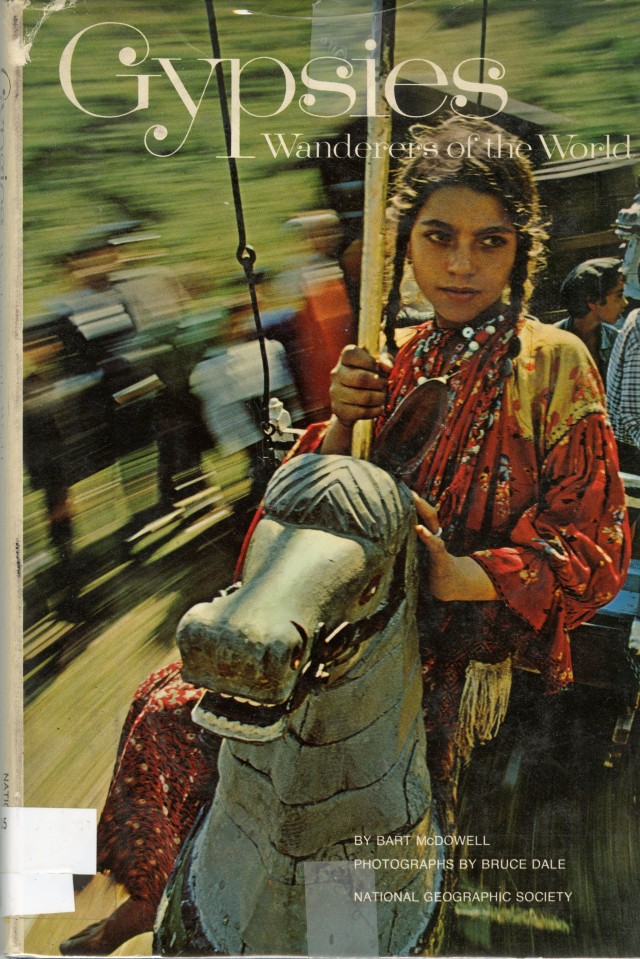
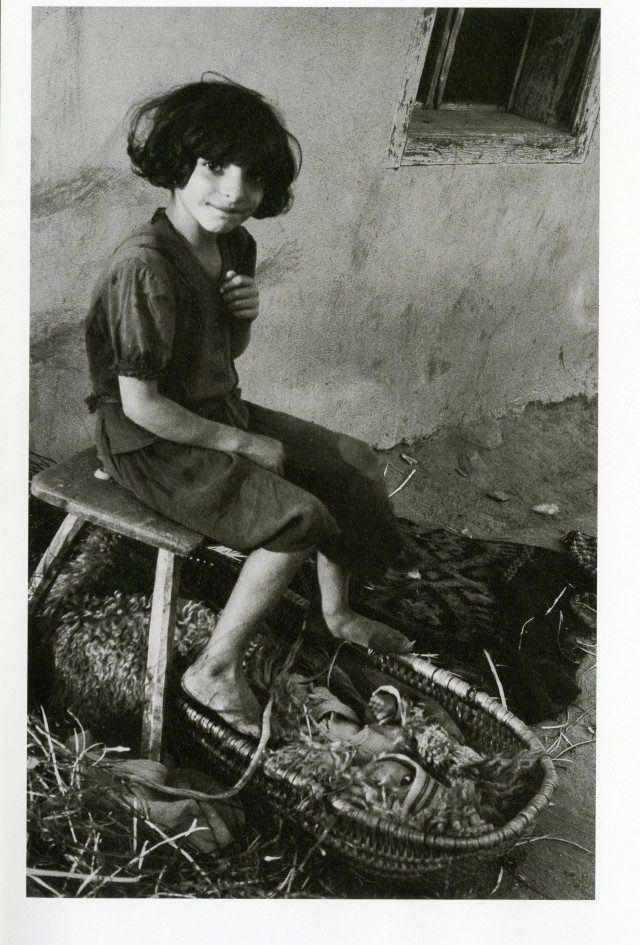
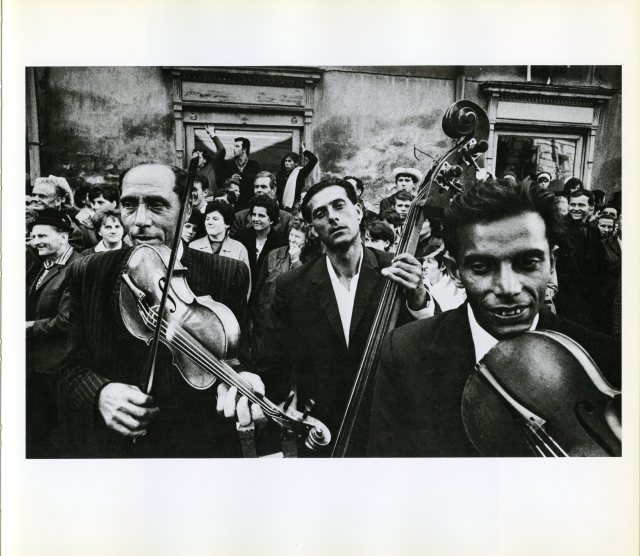
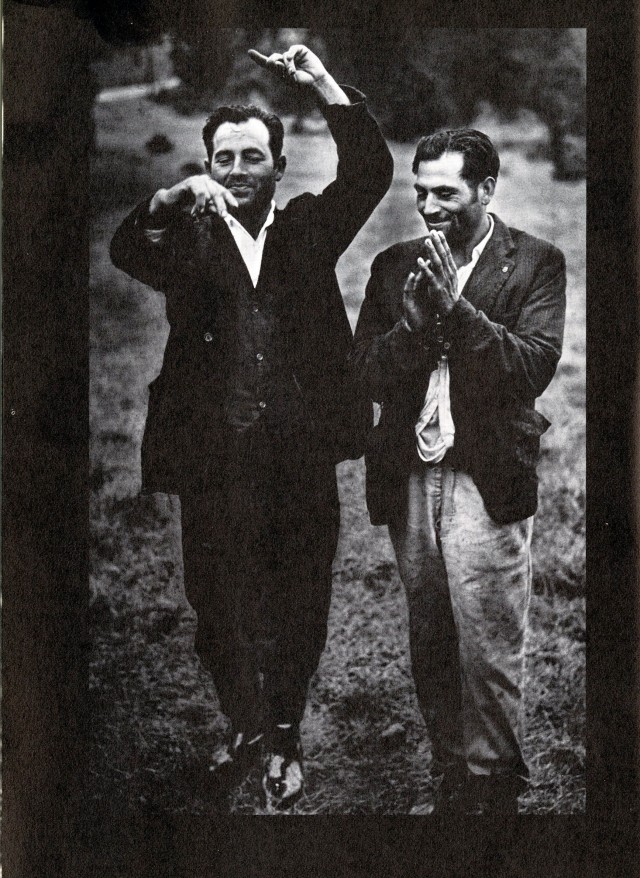
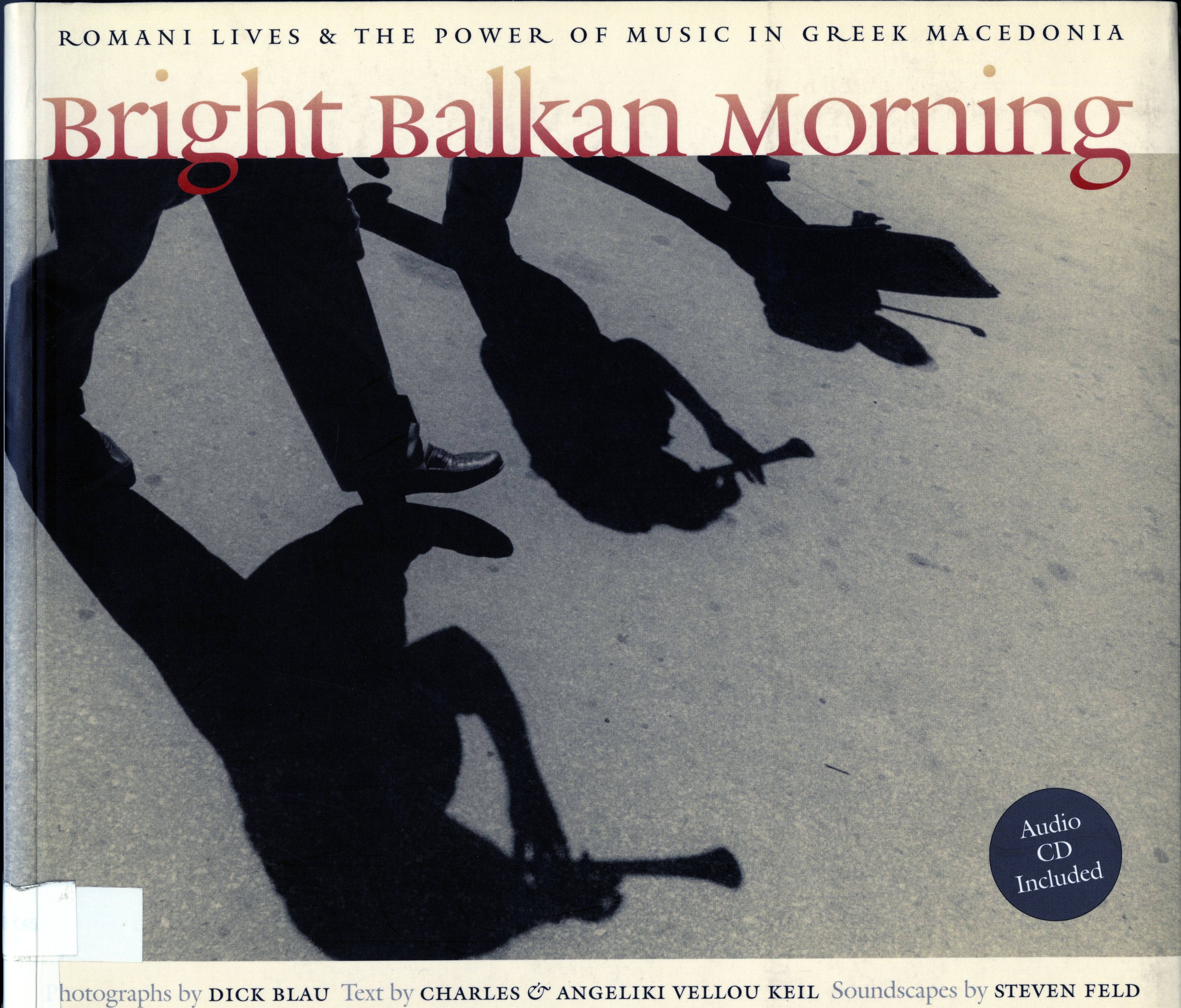
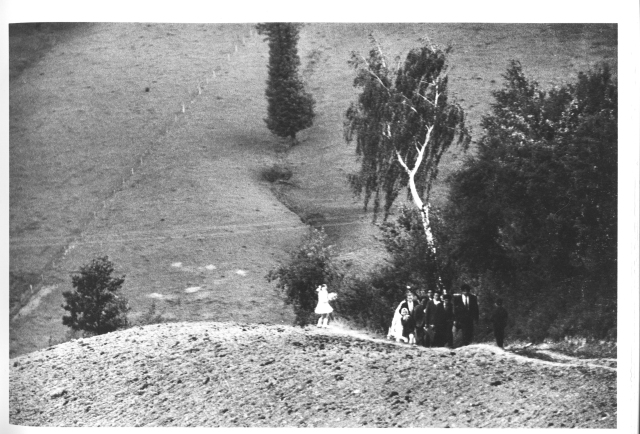

























Geen opmerkingen:
Een reactie posten